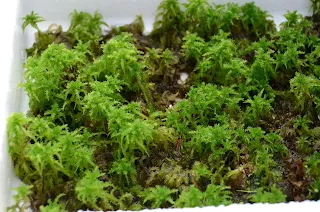Water moss, also known as sphagnum moss (or simply moss), is commonly used in bonsai cultivation. It serves several important purposes:
Moisture Retention: Water moss has excellent water retention properties. When placed at the bottom of a bonsai pot, it helps maintain consistent moisture levels for the roots.
Root Protection: Water moss acts as a protective layer around the roots, preventing them from drying out and providing insulation.
Aesthetic Enhancement: In addition to its functional benefits, water moss adds a natural and attractive appearance to the bonsai display.
Here’s a basic guide on using water moss in bonsai care:
Lining the Pot: Start by placing a layer of water moss at the bottom of the bonsai pot. This will create a moisture reservoir for the roots.
Wrapping the Roots: When repotting or planting a new bonsai, wrap the roots with a layer of water moss. This helps keep the roots hydrated during the transition.
Adding Bonsai Soil: After placing the water moss, add the appropriate bonsai soil mix on top. The soil provides nutrients and stability for the plant.
Watering: Regularly water the bonsai, ensuring that the water reaches the moss layer. The moss will absorb and release moisture as needed.
Remember to maintain proper humidity levels and avoid overwatering. Bonsai thrive when the balance between soil, water, and air is well-managed. Happy bonsai gardening! 🌿🌱
https://blogimg.goo.ne.jp/user_image/61/db/1ba0d0a9e8da0d78c0ab5b36f08d8a9b.jpg

Comments